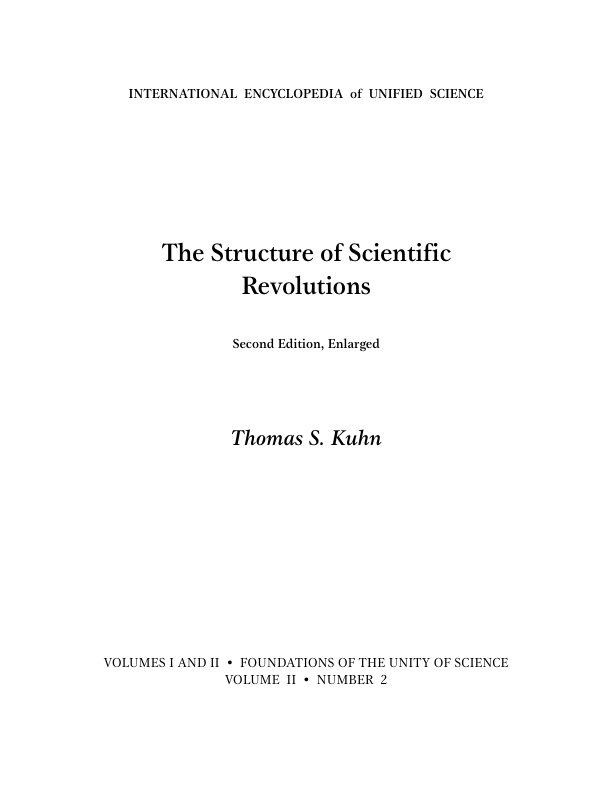The Structure of Scientific Revolutions - Thomas Kuhn

## Metadata
- Author: **Thomas Kuhn**
- Full Title: The Structure of Scientific Revolutions
- Category: #articles
- URL: https://readwise.io/reader/document_raw_content/140406954
## Highlights
- Looking at a contour map, the student sees lines on paper, the cartographer a picture of a terrain. Looking at a bubble-chamber photograph, the student sees confused and broken lines, the physicist a record of familiar subnuclear events. Only after a number of such transformations of vision does the student become an inhabitant of the scientist’s world, seeing what the scientist sees and responding as the scientist does. ([View Highlight](https://read.readwise.io/read/01hpq7e1nhh1y7w4vmkkyxg3s7))
- Instead, even after accepting the theory, they had still to beat nature into line, a process which, in the event, took almost another generation. When it was done, even the percentage composition of well- known compounds was different. The data themselves had changed. That is the last of the senses in which we may want to say that after a revolution scientists work in a different world. ([View Highlight](https://read.readwise.io/read/01hpxjvnbm375kqh8njg132j7x))
- I have so far tried to display revolutions by illustration, and the examples could be multiplied ad nauseam. But clearly, most of them, which were deliberately selected for their familiarity, have customarily been viewed not as revolutions but as additions to scientific knowledge. ([View Highlight](https://read.readwise.io/read/01hpxkgwf9hnt20zp7yh98e2qk))
- For the moment let us simply take it for granted that, to an extent unprecedented in other fields, both the layman’s and the practitioner’s knowledge of science is based on textbooks and a few other types of literature derived from them. ([View Highlight](https://read.readwise.io/read/01hpxks5xhfhxqq3gmwn2rfzvj))
- Karl R. Popper who denies the existence of any verification procedures at all.2 Instead, he emphasizes the importance of falsification, i.e., of the test that, because its outcome is negative, necessitates the rejection of an established theory. Clearly, the role thus attributed to falsification is much like the one this essay assigns to anomalous experiences, i.e., to experiences that, by evoking crisis, prepare the way for a new theory. ([View Highlight](https://read.readwise.io/read/01hpxn8tt69bcn9s88tgvrm71z))
- But falsification, though it surely occurs, does not happen with, or simply because of, the emergence of an anomaly or falsifying instance. Instead, it is a subsequent and separate process that might equally well be called verification since it consists in the triumph of a new paradigm over the old one. Furthermore, it is in that joint verification-falsification process that the probabilist’s comparison of theories plays a central role. Such a two-stage formulation has, I think, the virtue of great verisimilitude, and it may also enable us to begin explicating the role of agreement (or disagreement) between fact and theory in the verification process. ([View Highlight](https://read.readwise.io/read/01hpxnd4zt6yvrhernqbak19px))